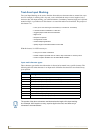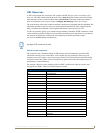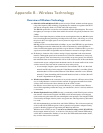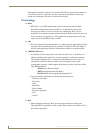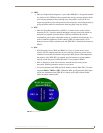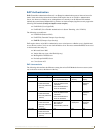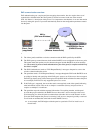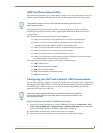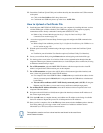
Appendix B - Wireless Technology
171
MVP-8400i Modero Viewpoint Wireless Touch Panels
TKIP
Short for Temporal Key Integration, is part of the IEEE 802.11i encryption standard
for wireless LANs. TKIP provides per-packet key mixing, message integrity check
and re-keying mechanism, thus ensuring every data packet is sent with its own
unique encryption key. Key mixing increases the complexity of decoding the keys by
giving the hacker much less data that has been encrypted using any one key.
WEP
Short for Wired Equivalent Privacy (WEP), is a scheme used to secure wireless
networks (Wi-Fi). A wireless network broadcasts messages using radio which are
particularly susceptible to hacker attacks. WEP was intended to provide the
confidentiality and security comparable to that of a traditional wired network. As a
result of identified weaknesses in this scheme, WEP was superseded by Wi-Fi
Protected Access (WPA), and then by the full IEEE 802.11i standard (also known as
WPA2).
WPA
Wi-Fi Protected Access (WPA and WPA2) is a class of system used to secure
wireless (Wi-Fi) computer networks. It was created in response to several serious
weaknesses researchers had found in the previous WEP system. WPA implements
the majority of the IEEE 802.11i standard, and was intended as an intermediate
measure to take the place of WEP while 802.11i was prepared (WPA2).
WPA is designed to work with all wireless network interface cards, but not
necessarily with first generation wireless access points.
To resolve problems with WEP, the Wi-Fi Alliance released WPA (FIG. 79) which
integrated 802.1x, TKIP and MIC. Within the WPA specifications the RC4 cipher
engine was maintained from WEP. RC4 is widely used in SSL (Secure Socket
Layer) to protect internet traffic.
FIG. 79 WPA Overview




